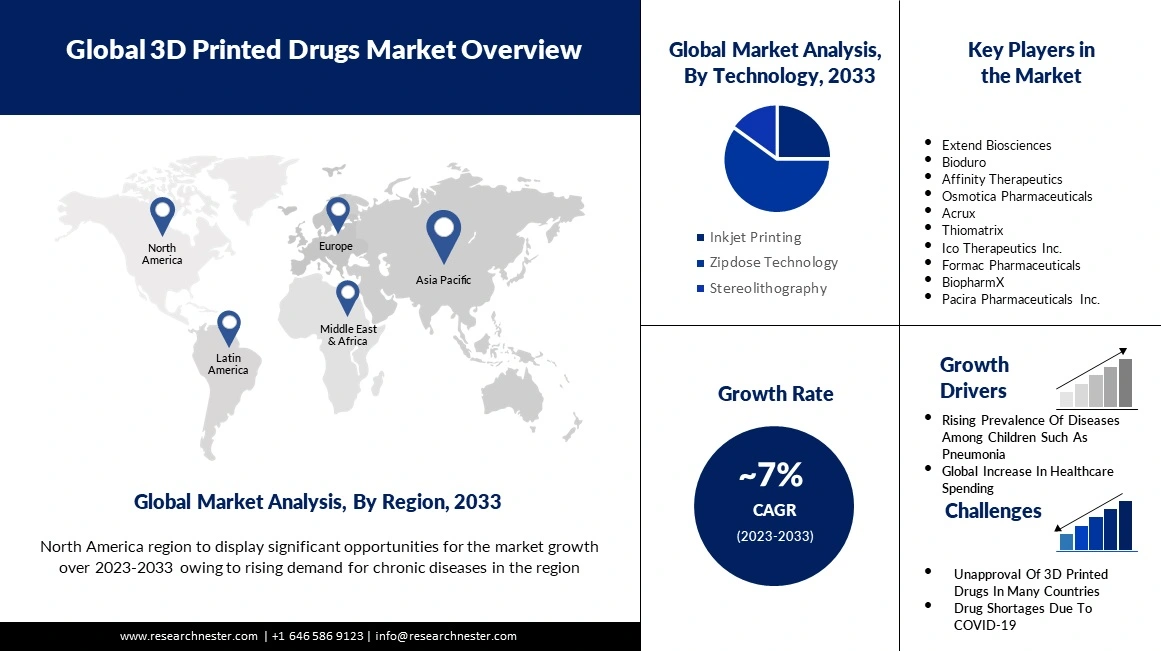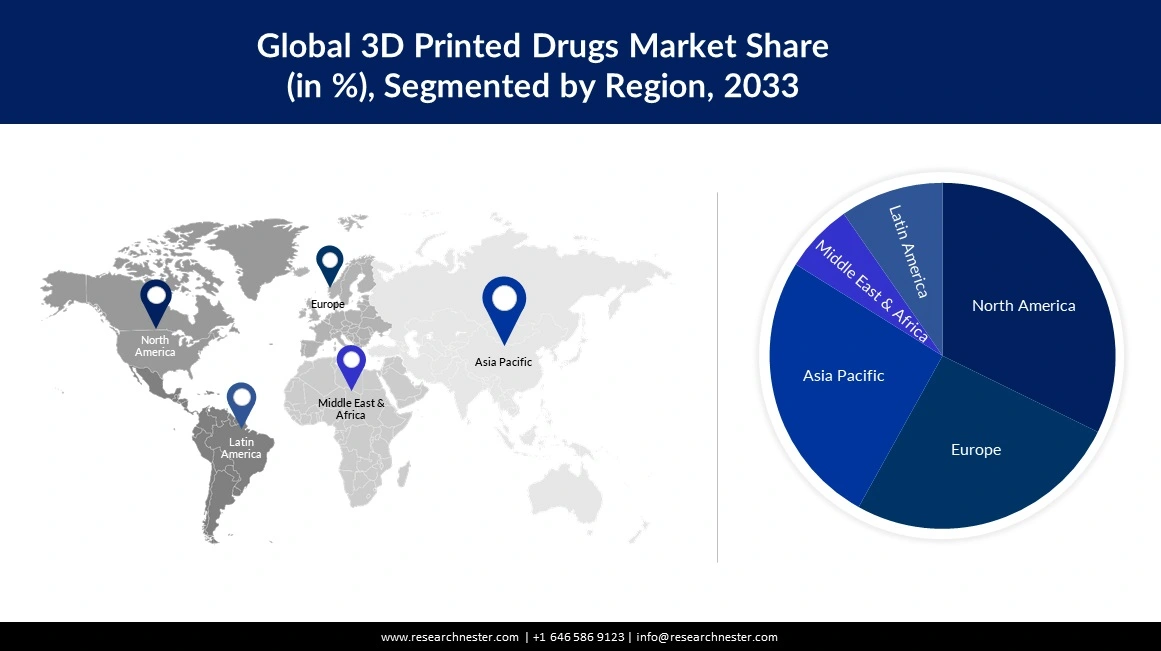
3D Printed Drugs Market size is poised to reach USD 530 Million by the end of 2033, growing at a CAGR of 7% during the forecast period, i.e., 2023-2033. In the year 2022, the industry size of 3D printed drugs was over USD 200 Million. The growth of the market can be attributed primarily to the rising 3D printing of pharmaceuticals. For instance, 3D printing of pharmaceuticals have increased year on year Valued at USD 174 million in 2020 and anticipated to grow to USD 28 million by 2025. In 2020, the 3D printing of pharmaceuticals accounted for USD 174 million and is expected to reach USD 28 million by 2025. There is an opportunity to capitalize on the benefits and overcome the challenges associated with 3D printing of pharmaceuticals.
Powder-liquid three-dimensional (3DP) printing technologies are used to develop 3D printed drugs. By using an aqueous fluid, different layers of powder can be bonded and multiple products can be produced. Three-dimensional powder-liquid drugs or pills are comparatively more soluble than two-dimensional drugs or pills. Furthermore, 3D printed drugs are able to dissolve insoluble compounds such as silver chloride very easily. 3D printed high dose drugs can also be dissolved within seconds, making them more acceptable. As well as this, 3D-printed drugs are comparatively reliable pills when taken at the right dosage. Moreover, rising number of chronic diseases, rising adoption of technological advancements, advantages of 3D printed drugs over general drugs such as low cost and better solubility along with, growing demand for self-medication. For instance, approximately 90% of surgical and medical wards have policies allowing patients to self-administrate.

Growth Drivers
Challenges
|
Base Year |
2022 |
|
Forecast Year |
2023-2033 |
|
CAGR |
7% |
|
Base Year Market Size (2022) |
USD 200 Million |
|
Forecast Year Market Size (2033) |
USD 530 Million |
Technology (Inkjet Printing, Zipdose Technology, Stereolithography)
The global 3D printed drugs market is segmented and analyzed for demand and supply by technology into inkjet printing, zipdose technology, and stereolithography. Among these segments, the zipdose technology segment is anticipated to capture the largest market size in the global 3D printed drugs market owing to the rise in the number of people suffering from dysphagia. It was observed that the prevalence of dysphagia in hospitalized patients ranges from 15% to 17%. Approximately 31% to 59% of nursing home residents suffer from dysphagia symptoms. In addition to being easy to use, this makes swallowing the drugs easier and proves to be effective for patients with dysphagia. Moreover, the growing demand for quickly dispersible drugs among geriatric and pediatric patients is expected to augment segment growth over the forecast period.
Our in-depth analysis of the global drugs market includes the following segments:
|
By Technology |
|
|
By Application |
|
|
By End User |
|
Regionally, the global 3D printed drugs market is studied into five major regions including North America, Europe, Asia Pacific, Latin America and Middle East & Africa region. Amongst these markets, the market in North America is projected to hold the largest market share by the end of 2033 owing to the growing incidence of chronic diseases and increasing health awareness among people. For instance, 44% of the population suffers from at least one chronic illness, which amounts to over 132 million Americans. Over 1.6 million Americans die every year from chronic diseases in the United States. Furthermore, the well-developed domestic healthcare infrastructure, extensive research and development, and increasing technological advancements in the North America region are anticipated to drive the regional market growth over the forecast period.




Pacira Pharmaceuticals Inc and sevredent sourcing solutions partnered to provide exparel to patients undergoing oral and maxillofacial treatments
Affinity Therapeutics raised USD 175 million for the development of engineered T cell therapies for cancers that are difficult to treat. The launch is one of the biggest biotech launches of the year.
Author Credits: Radhika Gupta, Shivam Bhutani
FREE Sample Copy includes market overview, growth trends, statistical charts & tables, forecast estimates, and much more.
Have questions before ordering this report?